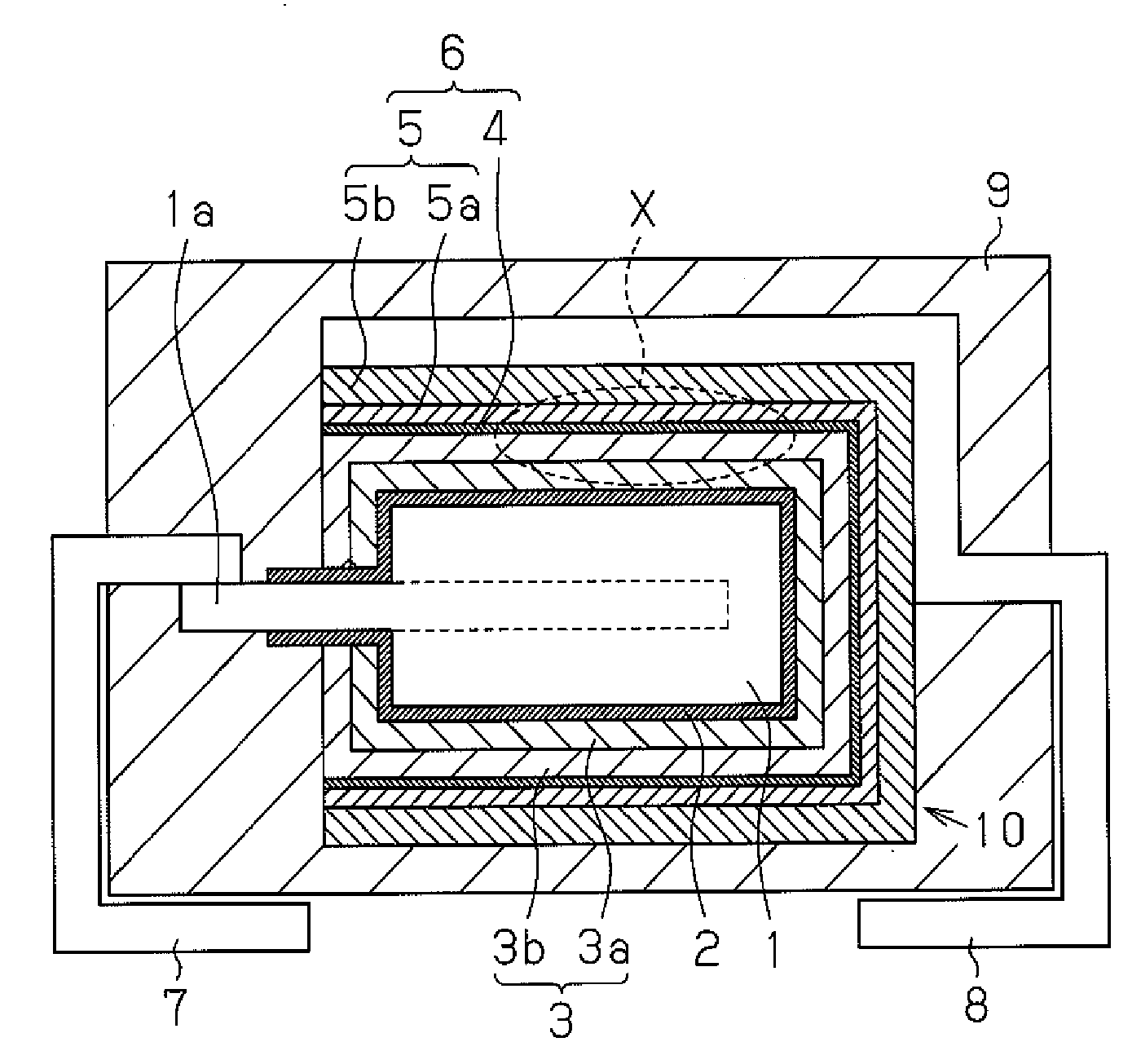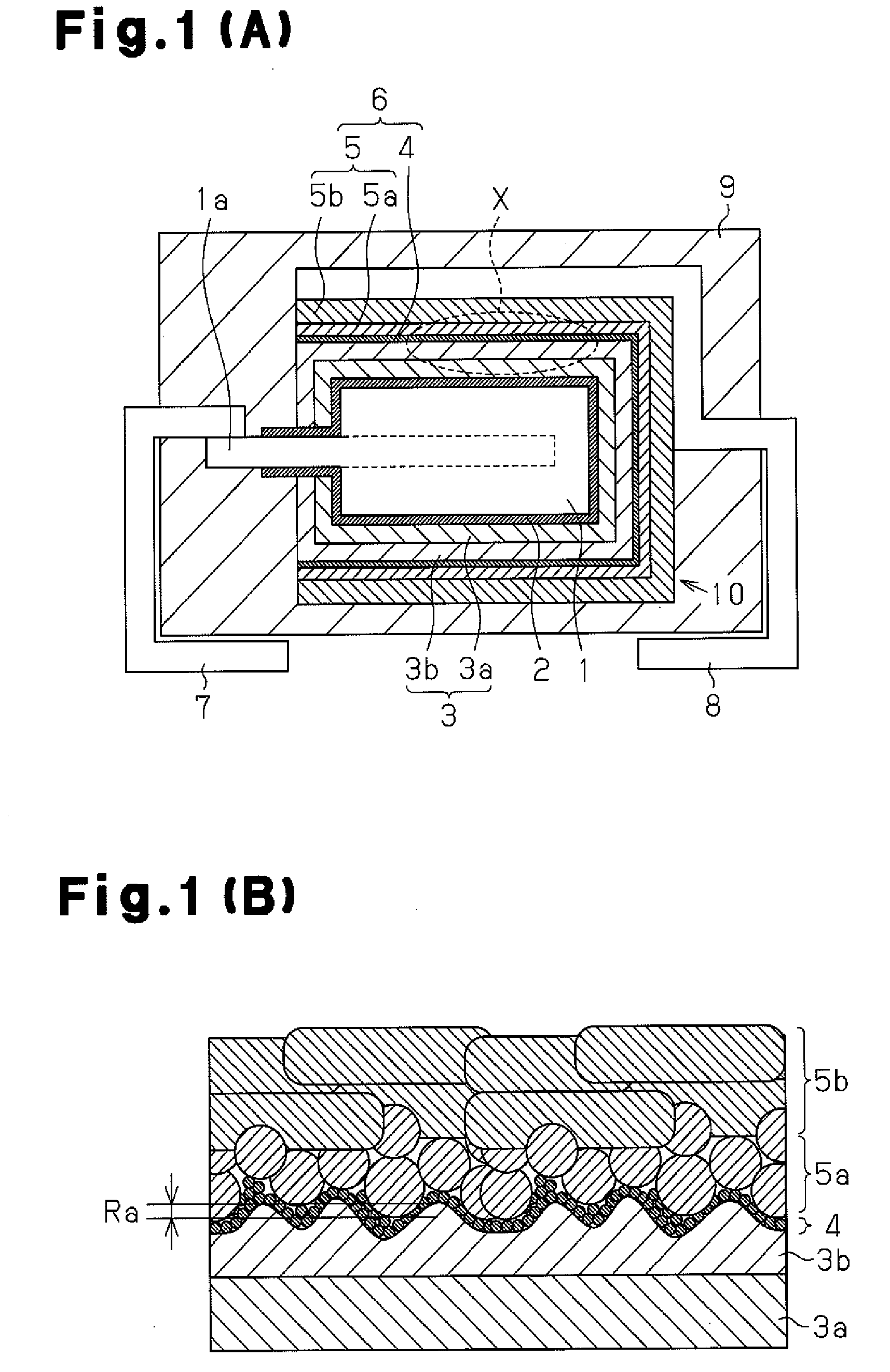Solid electrolytic capacitor
a technology of solid electrolytic capacitors and capacitors, which is applied in the manufacture of electrolytic capacitors, liquid electrolytic capacitors, electrolytic capacitors, etc., can solve the problem of limiting the reduction of equivalent series resistance, and achieve the effect of reducing the equivalent series resistance and reducing the effective contact area
- Summary
- Abstract
- Description
- Claims
- Application Information
AI Technical Summary
Benefits of technology
Problems solved by technology
Method used
Image
Examples
example 1
[0045]In example 1, a solid electrolytic capacitor A1 was fabricated through steps 1A to 9A, which respectively corresponds to the above-described steps 1 to 9.
[0046]Step 1A: Niobium metal powder having a CV value of 150,000 μF·V / g was prepared. The CV value is the product of the capacitance of the niobium porous sintered body and the electrolysis voltage after the formation of the electrolytic oxidation coating (dielectric layer). Molding was performed with the niobium metal powder so as to embed part of the anode lead 1a therein and then sintered in a vacuum environment at a temperature of approximately 1,200° C. This formed a niobium porous sintered body functioning as the anode body 1. The distal portion of the anode lead 1a was extended out of the anode body 1. The niobium metal particles were fused together during the sintering. Gaps formed between the niobium particles were reduced in size by the sintering. Unless otherwise mentioned, the CV value of the sintered body in each...
examples 2 to 4
[0074]In examples 2 to 4, solid electrolytic capacitors A2 to A4 were fabricated in the same manner as in example 1 except in that glass abrasive grains having an average grain diameter of 80 μm were blasted under a blasting pressure of 0.3 kg / cm2, 0.6 kg / cm2, and 1.0 kg / cm2 (projection distance 15 cm, processing time three minutes) in step 4A.
examples 5 to 9
[0075]In examples 5 to 9, solid electrolytic capacitors A5 to A9 were fabricated in the same manner as in example 1 except in that glass abrasive grains having an average grain diameter of 100 μm were blasted under a blasting pressure of 0.6 kg / cm2, 1.0 kg / cm2, 1.5 kg / cm2, 2.5 kg / cm2 and 5.0 kg / cm2 (projection distance 15 cm, processing time three minutes) in step 4A.
PUM
| Property | Measurement | Unit |
|---|---|---|
| Particle diameter | aaaaa | aaaaa |
| Surface roughness | aaaaa | aaaaa |
| Surface roughness | aaaaa | aaaaa |
Abstract
Description
Claims
Application Information
 Login to View More
Login to View More - R&D Engineer
- R&D Manager
- IP Professional
- Industry Leading Data Capabilities
- Powerful AI technology
- Patent DNA Extraction
Browse by: Latest US Patents, China's latest patents, Technical Efficacy Thesaurus, Application Domain, Technology Topic, Popular Technical Reports.
© 2024 PatSnap. All rights reserved.Legal|Privacy policy|Modern Slavery Act Transparency Statement|Sitemap|About US| Contact US: help@patsnap.com









